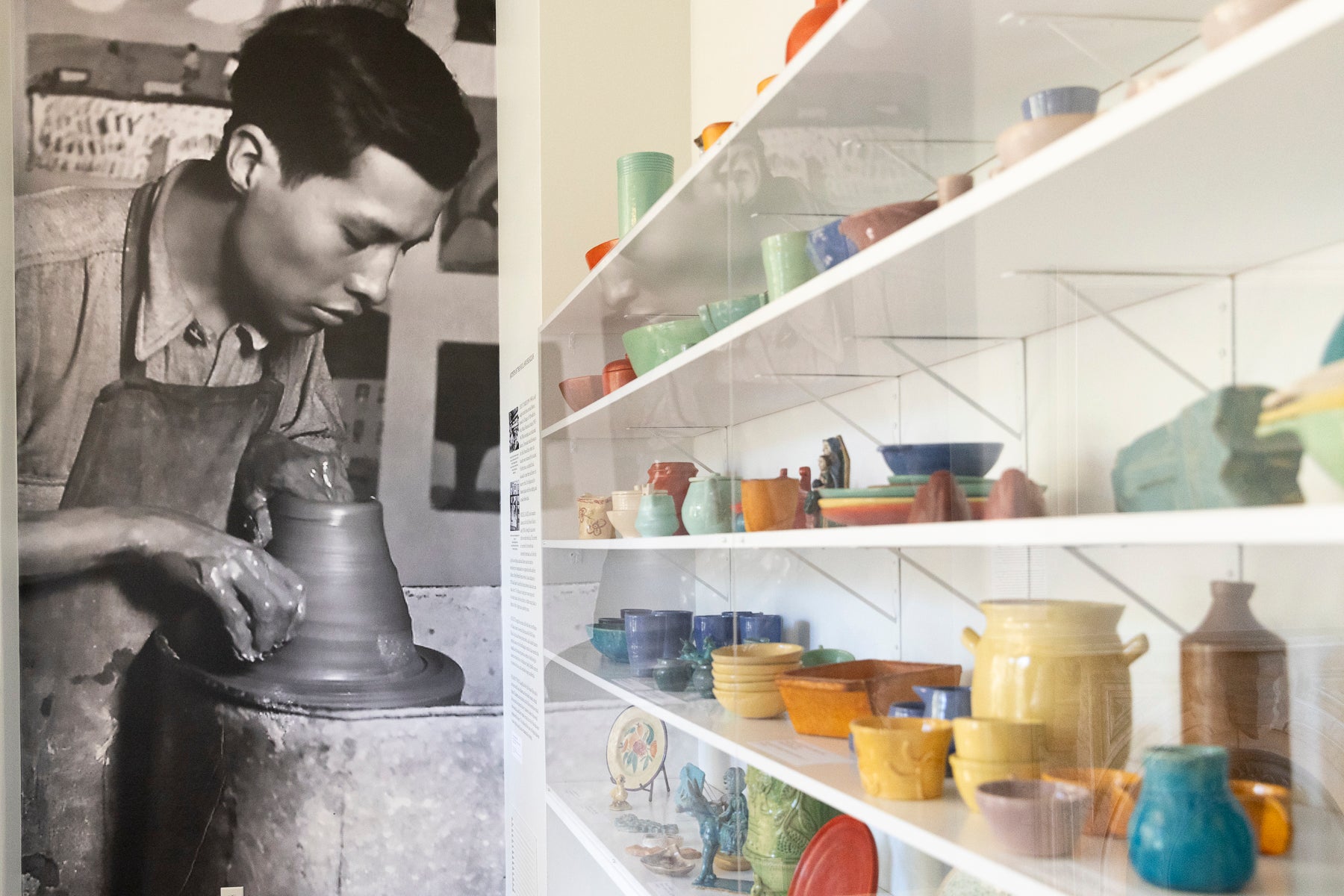Lost to time: Who made the crafts at Hull-House?
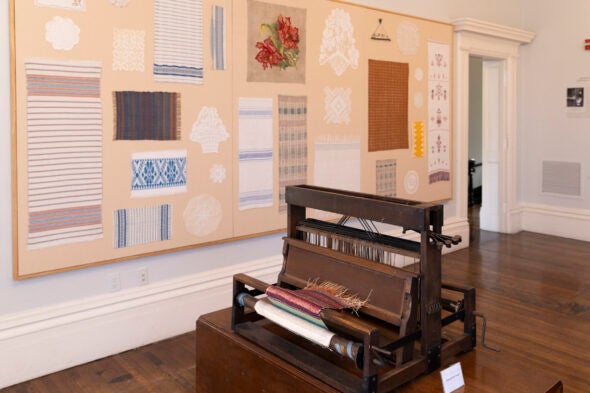
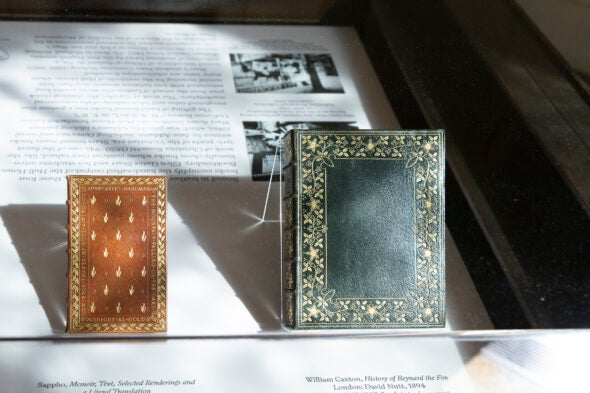
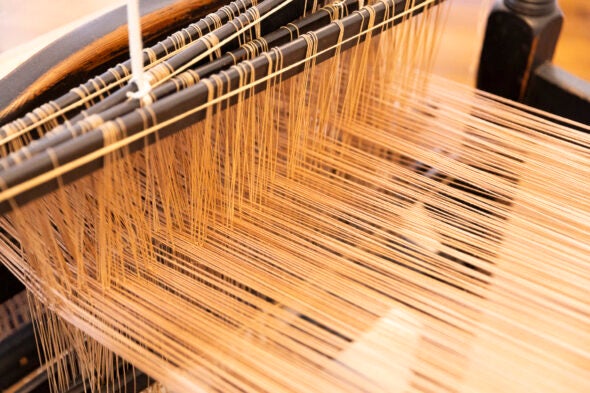
“Radical Craft: Arts Education at Hull-House, 1889-1935” explores the history and legacy of arts education at the social settlement. (Photos: Jenny Fontaine/UIC)
As visitors ascend a staircase to the Jane Addams Hull-House Museum’s second floor, the names of immigrant artisans who worked at the turn of the 20th century climb in a banner along the handrail. At the top landing, the trail of names leads to a room full of beautiful century-old textiles that share a history: their makers are unknown.
The museum’s rarely exhibited textiles collection is part of “Radical Craft: Arts Education at Hull-House, 1889-1935,” an exhibit that explores the history and legacy of arts education at the social settlement.
“We don’t have a lot of information about the tens of thousands of people that came to Hull-House on a weekly basis — who they were, what their lives were like,” said Ross Jordan, curatorial manager. “But we do have lots of different art objects that actually show us the skill, craft, ideas that people who came to Hull-House might have had, so the exhibition opens up that narrative through these objects.”
The Hull-House Settlement was the country’s most influential social settlement of the late 19th and early 20th centuries. Multitudes of immigrants who lived and worked in Chicago’s Near West Side gathered at the settlement to learn, share meals, engage in social and political dialogue and more.
Some of them made the textiles — weavings, blankets, lacework — in the exhibit, and their names were mentioned in historical Hull-House bulletins and yearbooks. Even so, it’s difficult to connect those names to the work they produced, said Liesl Olson, director of the Hull-House Museum.
“We are elevating their histories by actually underscoring absence,” Olson said.
Museum visitors can also explore the new bookshop, Hull-House Books, which opened alongside the exhibition Sept. 8. The store features books written by Jane Addams and handpicked books on Chicago, social movements, cookbooks, poetry and more.
‘Radical Craft’ celebrates artistry for all
In the late 1800s and early 1900s, the Hull-House Settlement was a home for educators who saw the arts as a tool for social reform in nearby immigrant communities. When Ellen Gates Starr co-founded the Hull-House Settlement in Chicago with Jane Addams, she brought with her the principles of England’s Arts and Crafts movement, Olson said, which put art at the center of topics such as citizenship, public health and women’s suffrage.
The works showcased in the new exhibition show how Hull-House provided opportunities for members of nearby immigrant communities to create, Olson said.
“This was the poorest, the most disenfranchised, the most industrial neighborhood in the city of Chicago at the turn of the century,” she said. “And the idea that Hull-House reformers brought to this neighborhood was that the experience and practice of art is central to our humanity. And the experience of full humanity — for everyone — was always was really the aim.”
On the first floor of the museum, there are newly restored paintings by artist Alice Kellogg Tyler, including pieces highlighting gender roles in the late 19th and early 20th centuries. There are also handbound books from Starr’s bookbindery, which valued slow craftsmanship over quick commercial printing. Visitors can bind their own free takeaway catalog in English or Spanish. A traditional exhibit catalog — a first for the museum — is available for purchase in the bookshop.

Upstairs, they can see ceramics glazed in bold colors, inspired by the artisans’ Mexican heritage and created using the historic Hull-House kilns; lacework and textiles crafted at the settlement that are unattributed and undated; and two antique looms that were used to craft textiles in the early 1900s at the Hull-House Labor Museum.
“The Labor Museum was one of the most successful arts programs of the settlement, and it was really an experiment in response to the loss of heritage craft in the communities around Hull-House — the sense that this ability to embroider, to knit, to work in complicated ways with textiles was being lost as older generations were dying out,” Olson said.
“It was like a living museum, showing people the kind of expertise they brought from the Old World in an effort to give it value,” she said. “It was certainly an opposition to the kind of quick manufacture that was happening in factories.”
“Radical Craft” highlights the Hull-House Settlement’s commitment to providing an opportunity for everyone to have access to the arts, Jordan said.
“One of the key things we hope people walk away with is a little bit of inspiration,” he said. “So being able to leave the space and know that these were makers in Chicago, and you, too, can make things and be a maker.”
The exhibition will include a series of workshops hosted in partnership with community organizations such as Red Line Service, an arts organization led by people experiencing homelessness, and Firebird Community Arts, which provides art instruction to people impacted by structural and individual trauma.
Other upcoming programs open to the public include the Radical Mending series where arts educators from The WasteShed help visitors practice skills like sewing; Weaving Stories, a collaborative program with Art Design Chicago partner institutions that focuses on community-building weaving sessions; and Unravel, a workshop presented in collaboration with The Weaving Mill that will allow participants to create and weave textiles on the Hull-House table looms.
“Radical Craft,” on display through July 2025, and its companion exhibition at Gallery 400, “Learning Together: Art Education and Community,” are funded by the Terra Foundation for American Art. The Hull-House exhibition also received funding from the National Endowment for the Arts and the Efroymson Family Fund.
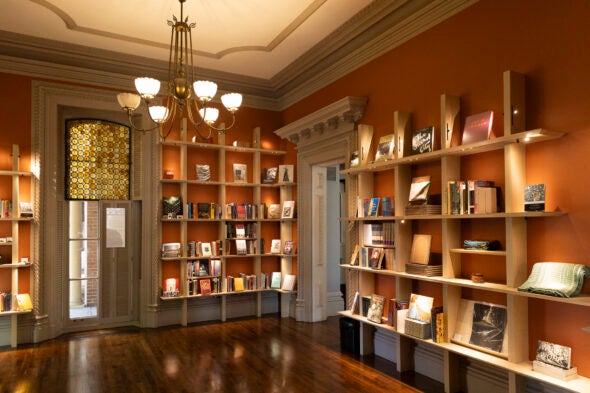
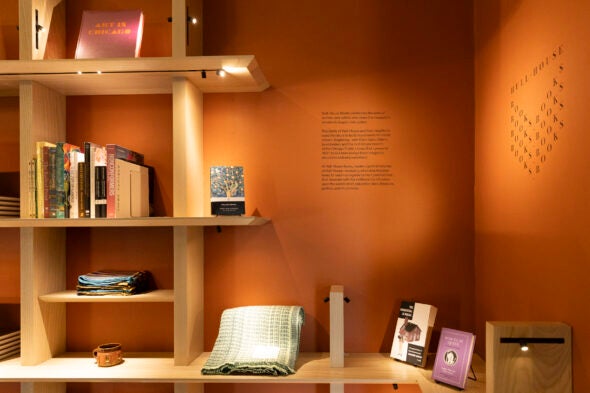
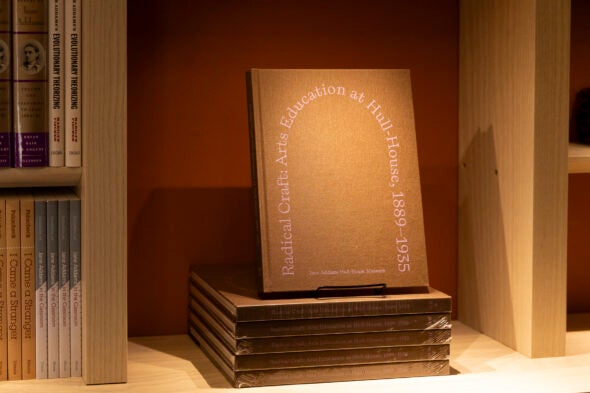
New bookstore extends museum’s mission
Hull-House Books opened its doors earlier this month. Visitors can find books ranging from those Addams loved to modern works that share the museum’s mission. The shop also highlights the history of the Hull-House Settlement, which housed a branch of the Chicago Public Library.
“It’s a really well-curated collection of books that extend the mission of the museum to educate,” Olson said. “Books have always been central to social reform.”
Other works available for purchase in the store include textiles created by The Weaving Mill and the museum’s first full exhibition catalog, of the “Radical Craft” exhibition. The catalog includes essays by historians, curators and artists.
The shop is open during the museum’s regular hours: 10 a.m.-4:50 p.m. Tuesday to Friday, and noon-4:50 p.m. Saturday. A National Historic Landmark, the Hull-House Museum is open to the public and admission is free. Visit the museum’s website for more information.
